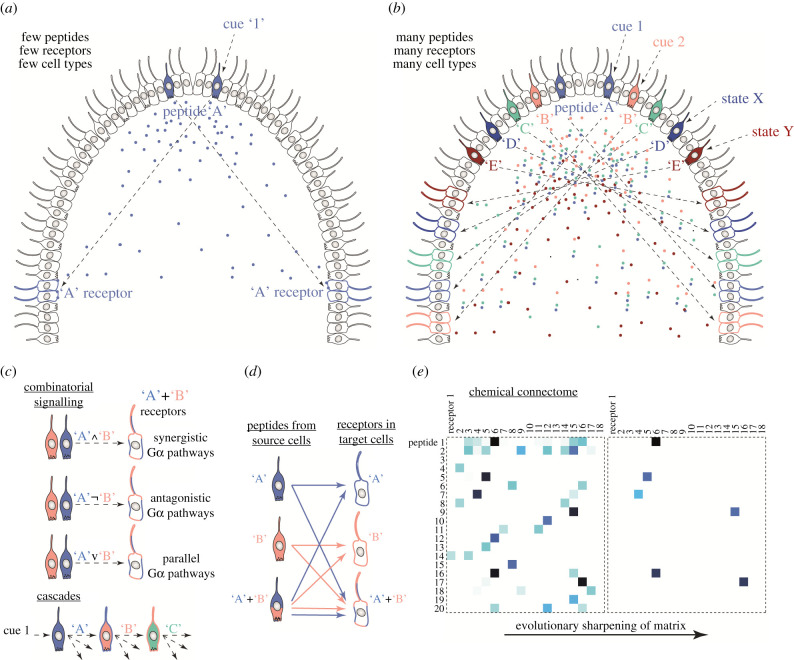Figure 1.
Wiring of complex networks in pre-nervous systems. (a) A hypothetical early animal with a ciliated epithelium with interspersed locomotor and sensory cells. One cell type expresses a signalling peptide that is released upon an external cue. The peptide signals to another cell type expressing a specific receptor for the peptide. (b) Through the diversification of cell types, signalling peptides and their receptors, an organism with more complex chemical wiring evolves. Note that peptides can be regulated both by external cues and internal states (e.g. autonomous activity, circadian rhythm, hunger, pacemakers). The effector systems could also include contractile cells. (c) If combinatorial signalling is possible, the chemical networks can encode state/cue combinations. This requires synergistic or antagonistic intracellular pathways (through Gα proteins for GPCRs). (d) With two peptides and two receptors it is possible to have eight signalling links with potentially different signalling outcomes. (e) The chemical connectome represents the matrix of ligand–receptor coupling but also the cellular coupling through these signalling pairs. Following gene duplications, the chemical matrix also evolves, e.g. through increasing specificity.

